Portoferraio, the capital of Elba Island, is a small town with multiple charms, combining historical heritage, port activity, and natural beauty.
A former Medici fortress, the town is dominated by several imposing bastion complexes such as Forte Falcone and Forte Stella. It also houses the Napoleonic residences, reflecting its historical role.
Its pebble beaches, bathed in crystal-clear waters, are full of appeal.
The town center, beyond the tourist and commercial ports, is characterized by picturesque streets, stairways, and lively squares, inviting leisurely walks. It is an ideal starting point to explore the island.
Things to Do and See in Portoferraio
- Historic Center: stroll through the picturesque streets, discover local shops, and enjoy the seaside restaurants.
- Medici Fortresses: built in the 16th century by Cosimo I de’ Medici to defend Portoferraio against maritime incursions, they form a complete fortification system. Forte Falcone, perched on the hilltop, dominates the town and offers a wide panorama of the sea. Forte Stella is recognizable by its star-shaped layout and lighthouse. Torre della Linguella is a tower located at the entrance of the port.
- Napoleonic Residences: explore the Palazzina dei Mulini in the historic center and Villa San Martino, located about 5 km away.
- Beaches in Portoferraio (directly accessible from the town, < 2 km): Spiaggia delle Ghiaie, Spiaggia di Capo Bianco, Spiaggia della Padulella, Spiaggia di Sottobomba
- Beautiful Beaches Nearby: Sansone Beach, Biodola Beach, Procchio Beach, Morcone Beach
Where Portoferraio Is Located and Map of Sites
If you see this after your page is loaded completely, leafletJS files are missing.
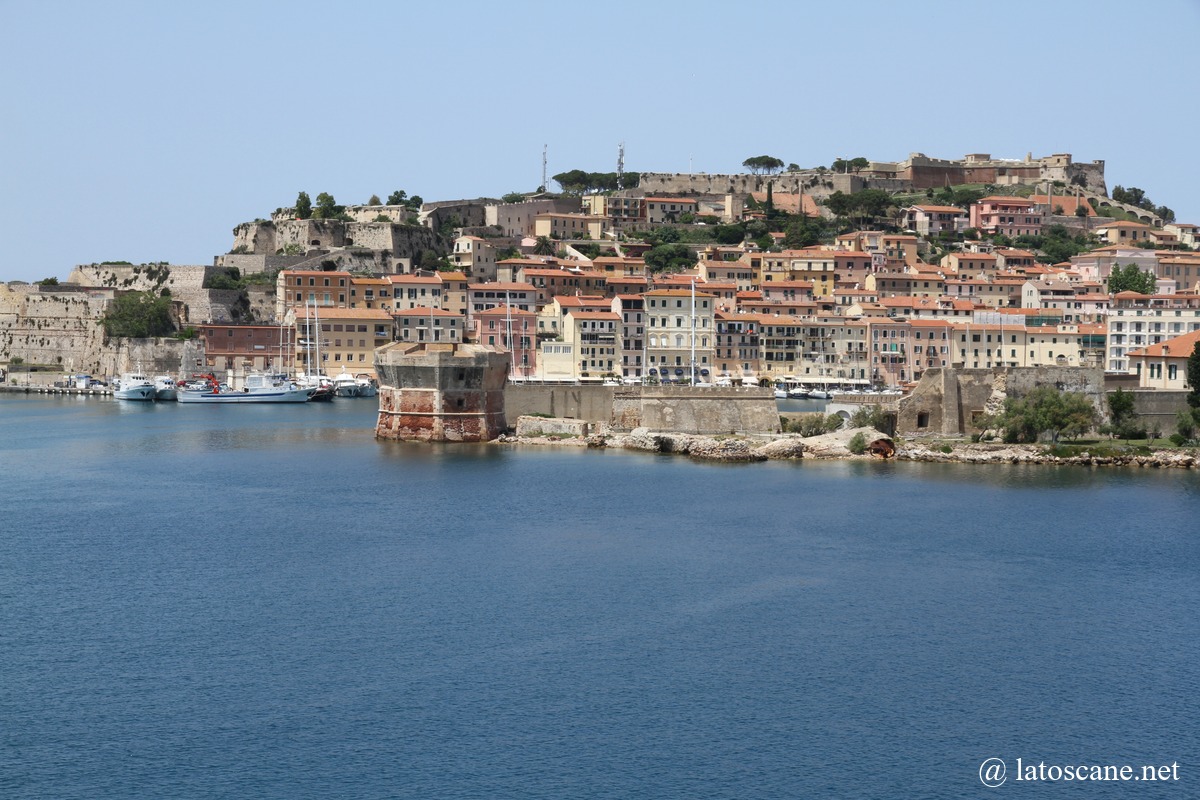
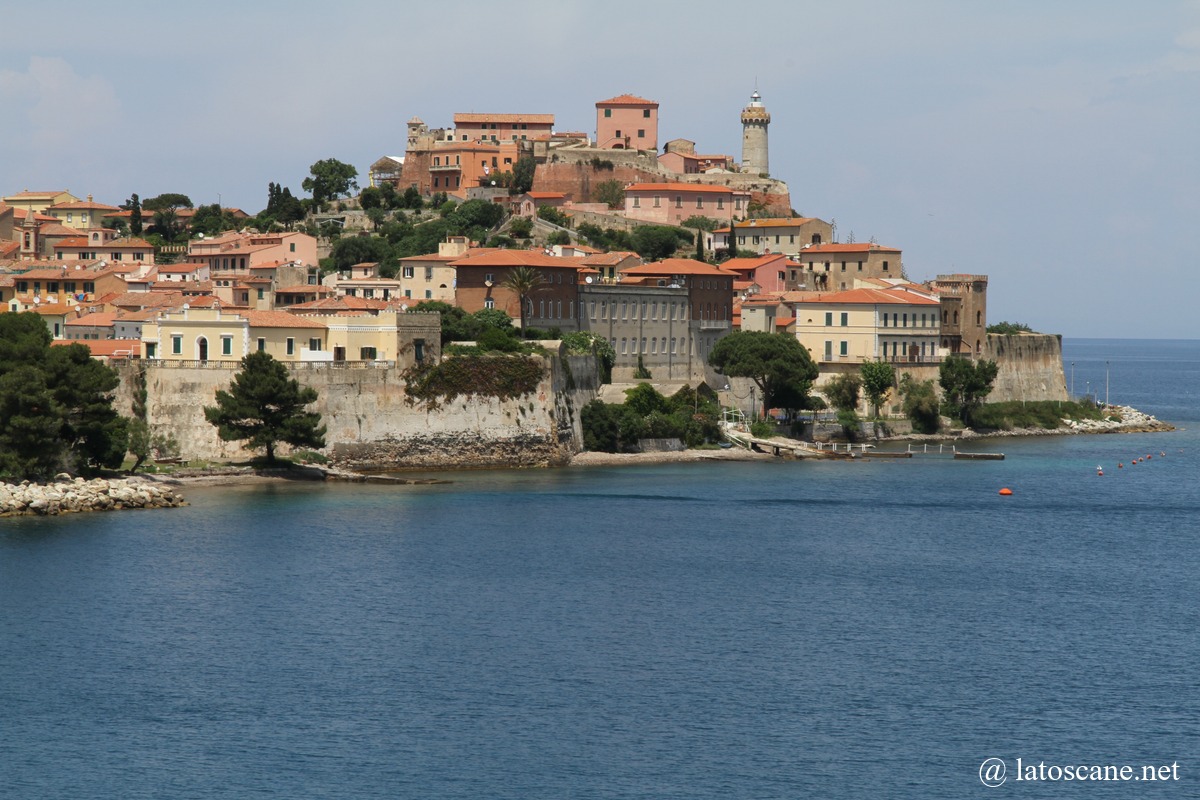
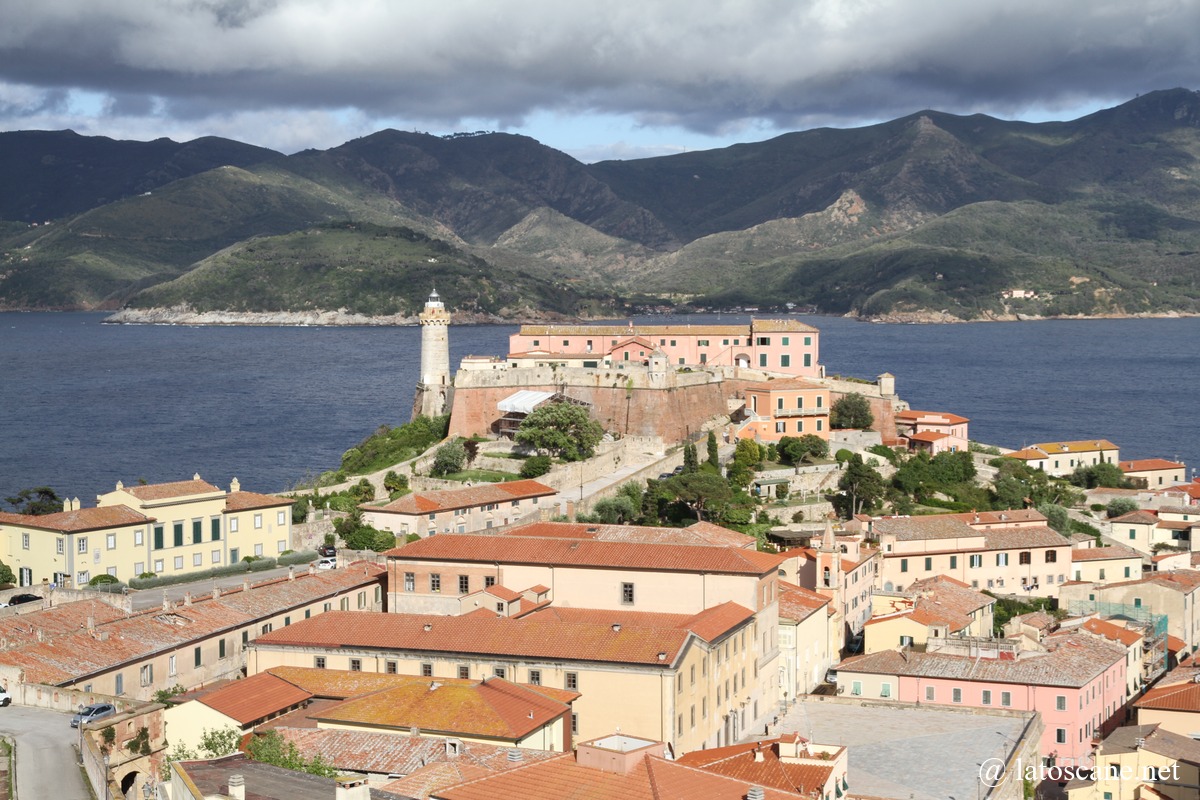
Historic Center and Port of Portoferraio
The historic center of Portoferraio is located on the peninsula forming the city’s main port. It is organized around the fortifications built by the Medici in the 16th century, including Forte Falcone to the west and Forte Stella to the east, which frame the town and offer panoramic views of the sea and the port.
The narrow streets of the center, such as Via Gori and Via Roma, lead to squares like Piazza Cavour and Piazza della Repubblica, where historic buildings and local shops can be found. The district also houses buildings related to Napoleon’s exile, such as the Palazzina dei Mulini, and churches such as San Giuseppe Church.
Visitors can explore artisan shops, markets, and cafés, while the waterfront along the Medici Port is lined with restaurants and cafés under the arcades. The port district today combines maritime activities and a pleasure marina.
The Teatro dei Vigilanti is a theater built by Napoleon on the site of a former church. The Church of the Misericordia is another example of local religious architecture.
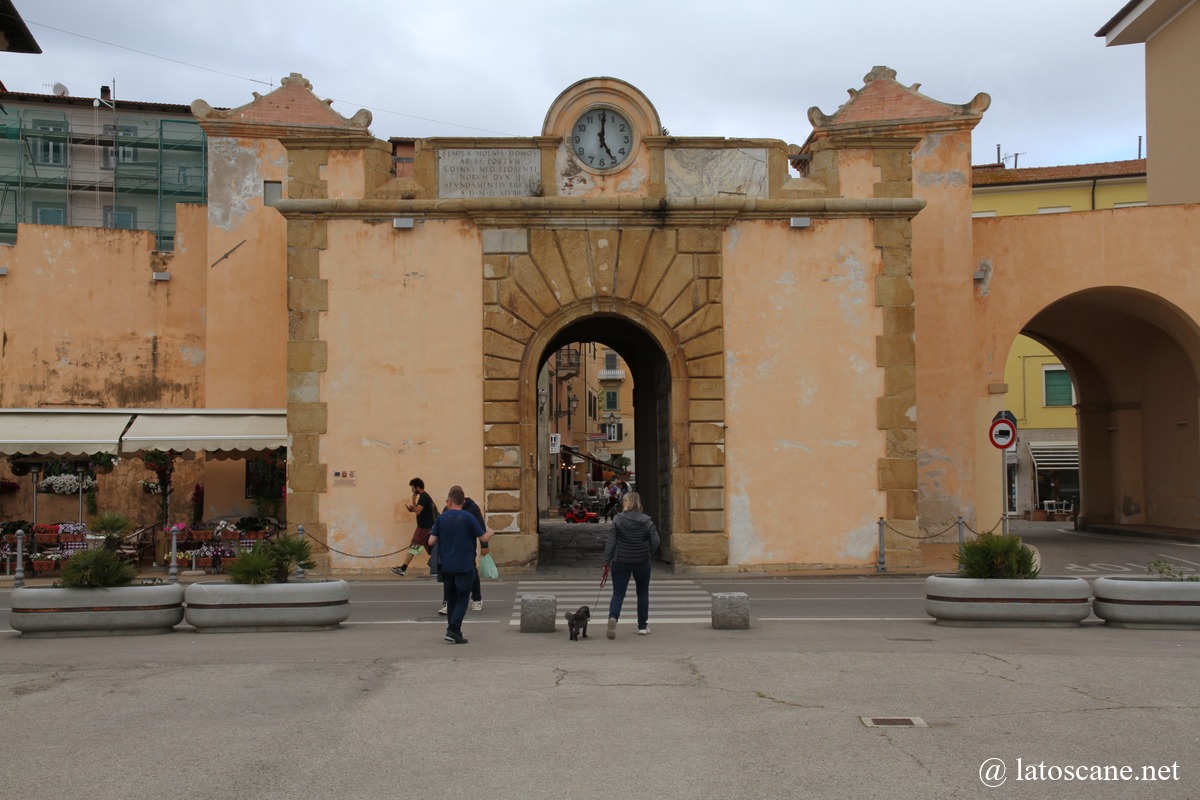
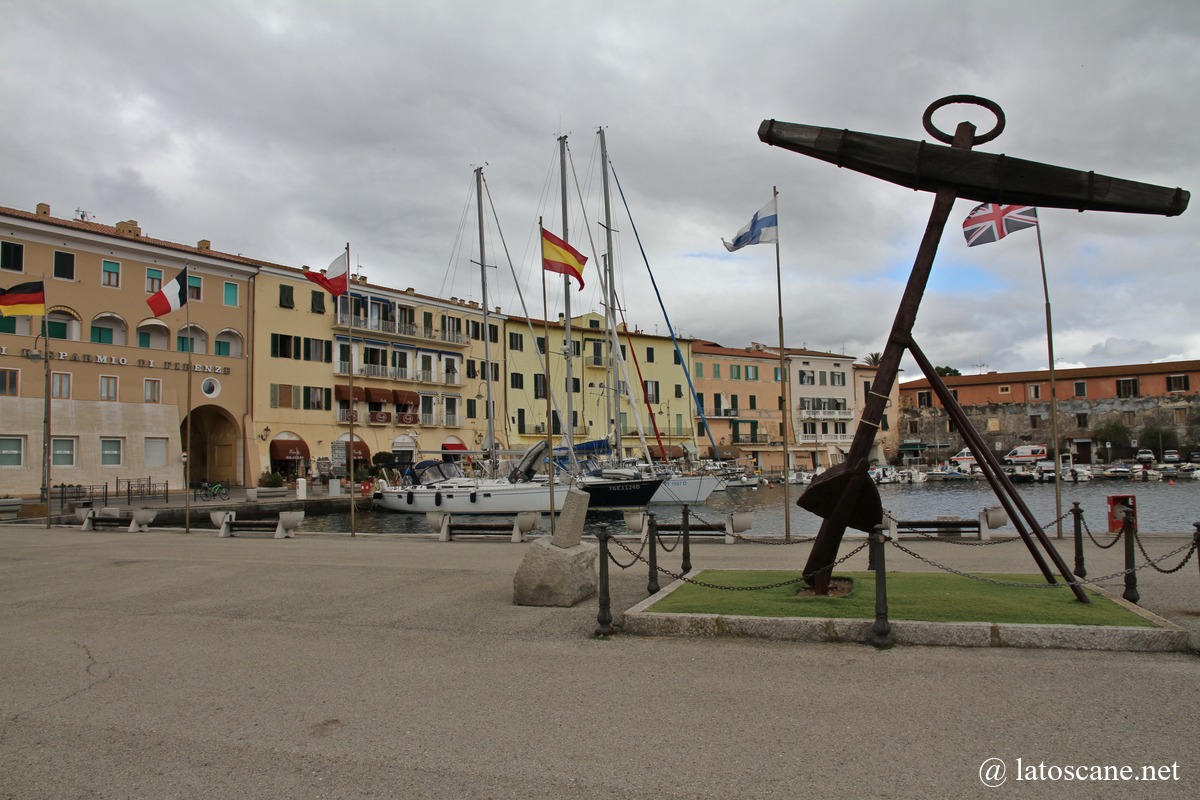
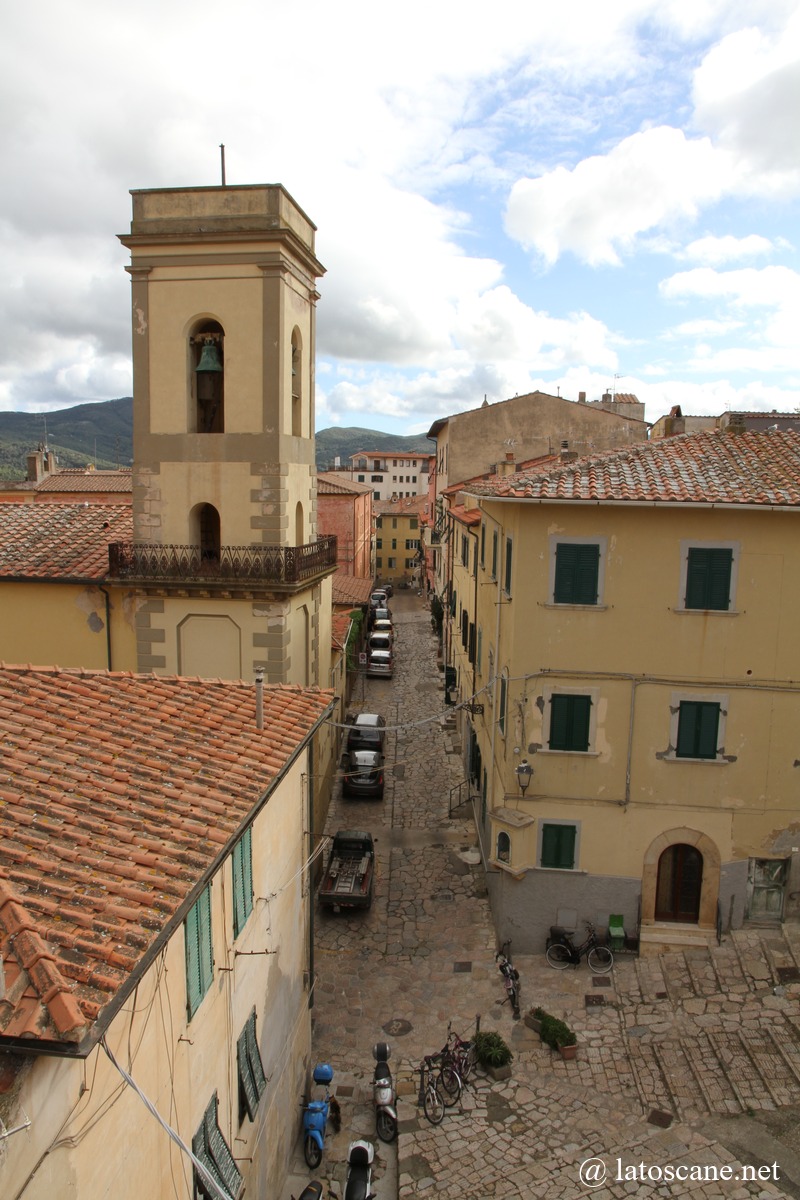
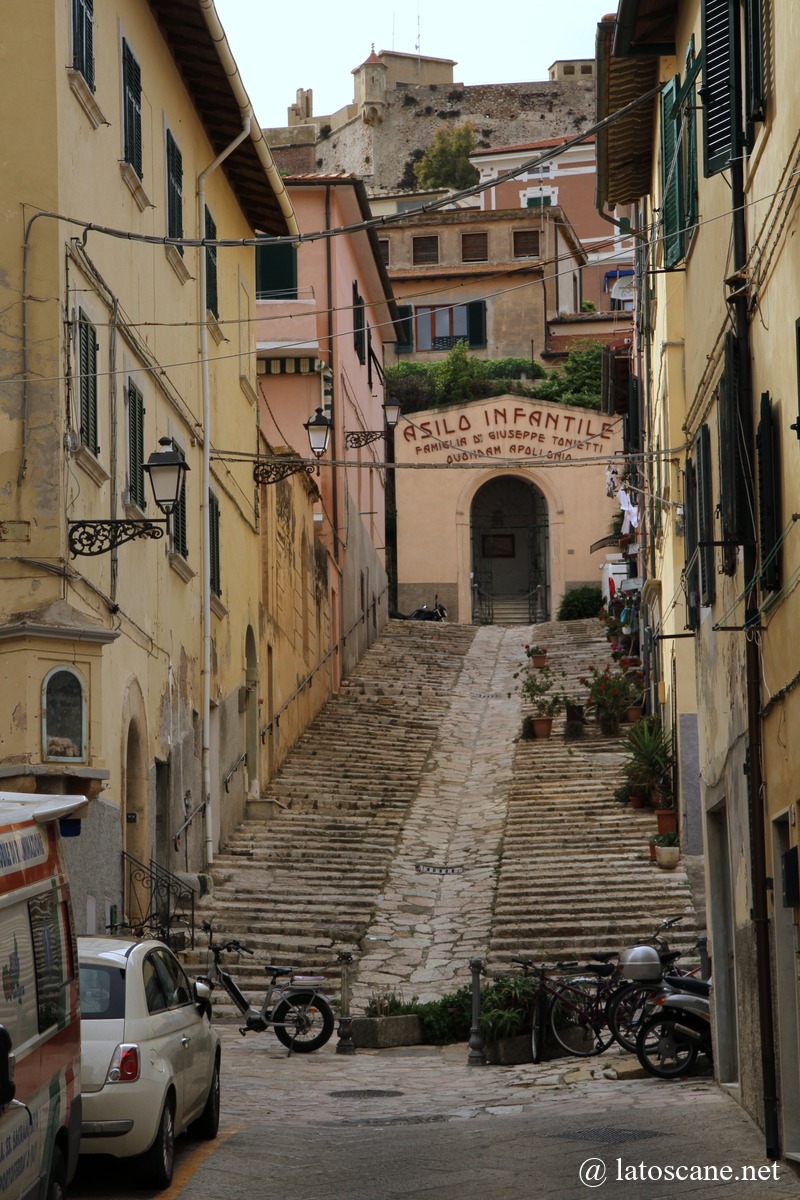
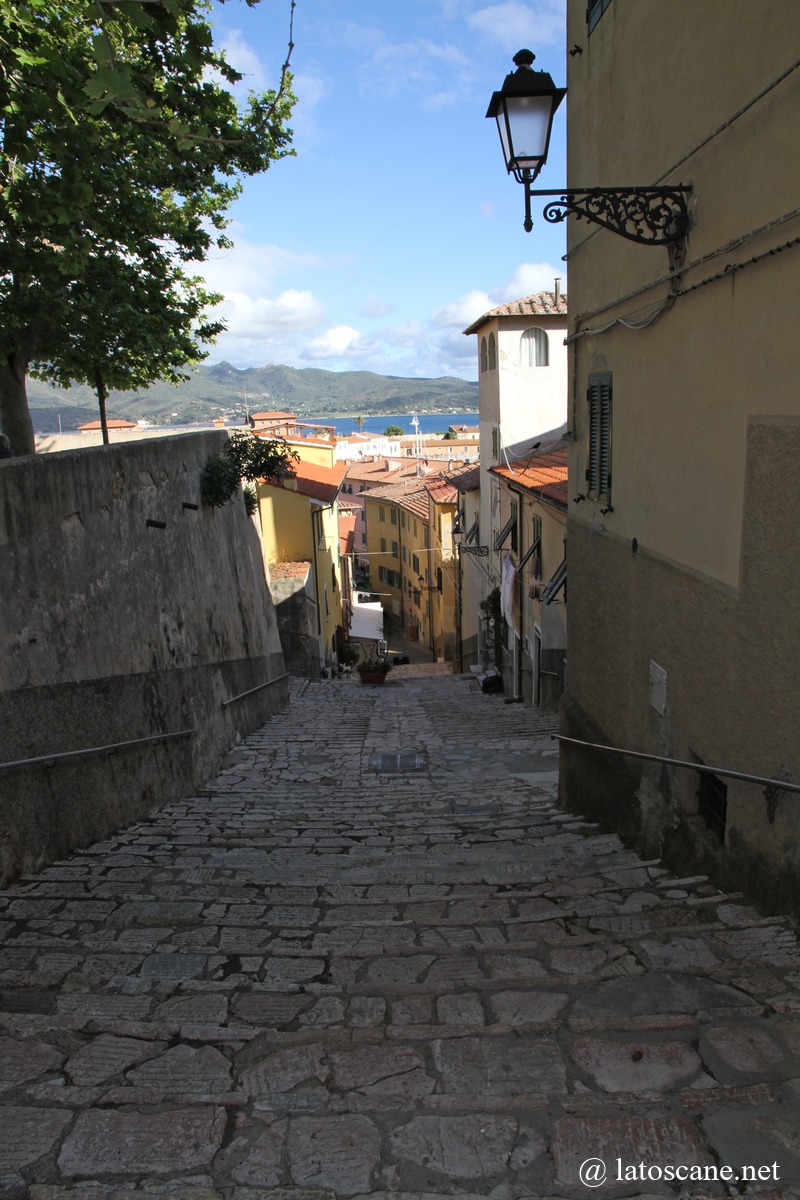
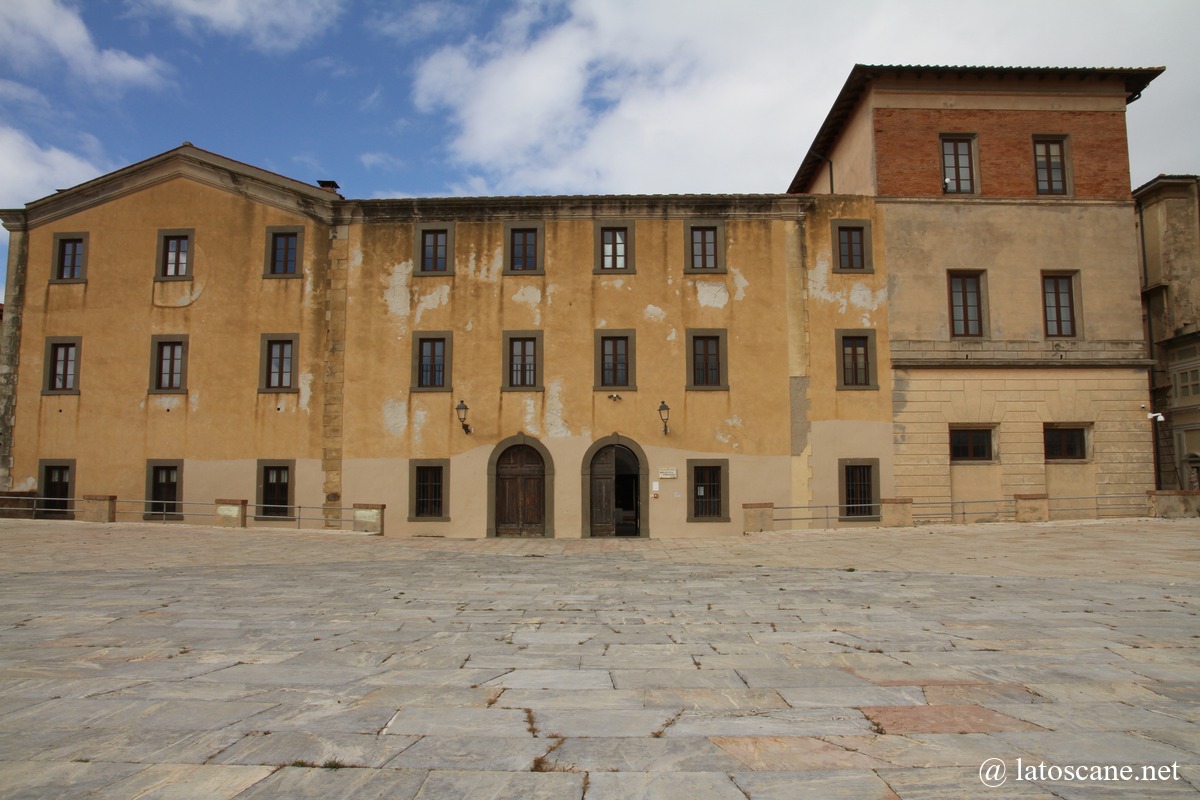
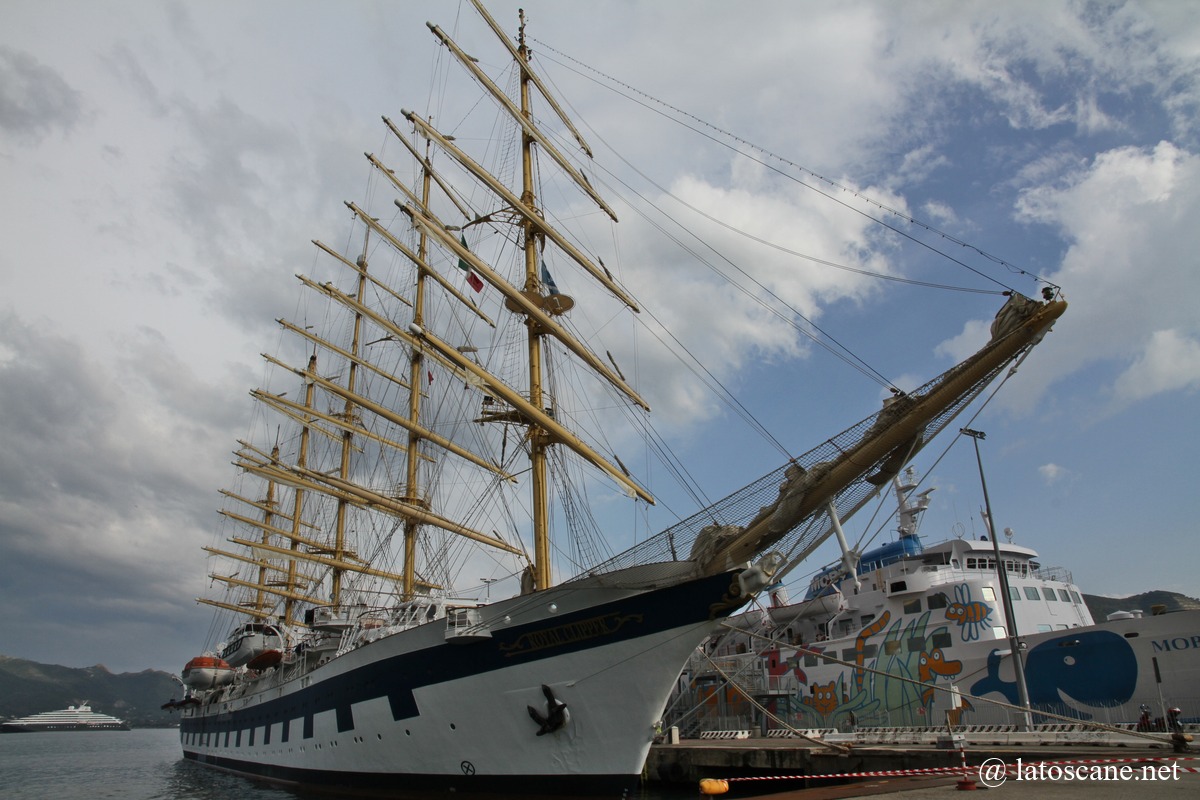
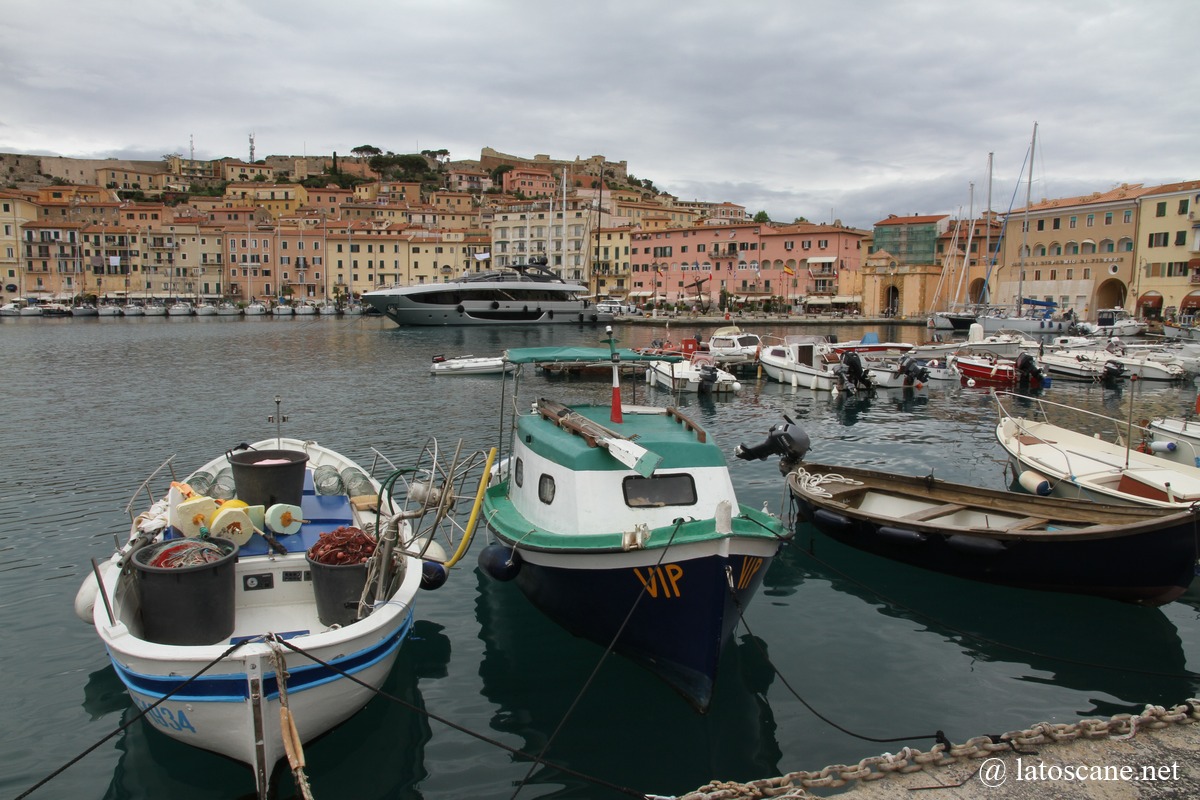
Fortresses of Portoferraio
The defensive system of Portoferraio was established in the mid-16th century by order of Cosimo I de’ Medici, following a plan entrusted to Giovanni Battista Belluzzi and strengthened by Bernardo Buontalenti.
The Forte Falcone, built on the highest point of the town, served as a citadel and was completed with additional bastions and underground passages during the 17th century.
The Forte Stella, constructed in the same period, takes its name from its star-shaped layout; it received a lighthouse in 1788 under the Lorena, when the island came under Tuscan rule.
The Forte Inglese, located near the port, was built by the English in the 18th century to protect the island from invasions.
The Torre della Linguella, also from the 16th century, directly protected the entrance to the port; it was renovated and used as a prison in the 18th and 19th centuries, before being transformed into a modern archaeological museum. The entire fortification complex, connected by a system of walls, illustrates the successive developments of military techniques between the Renaissance and the modern era.
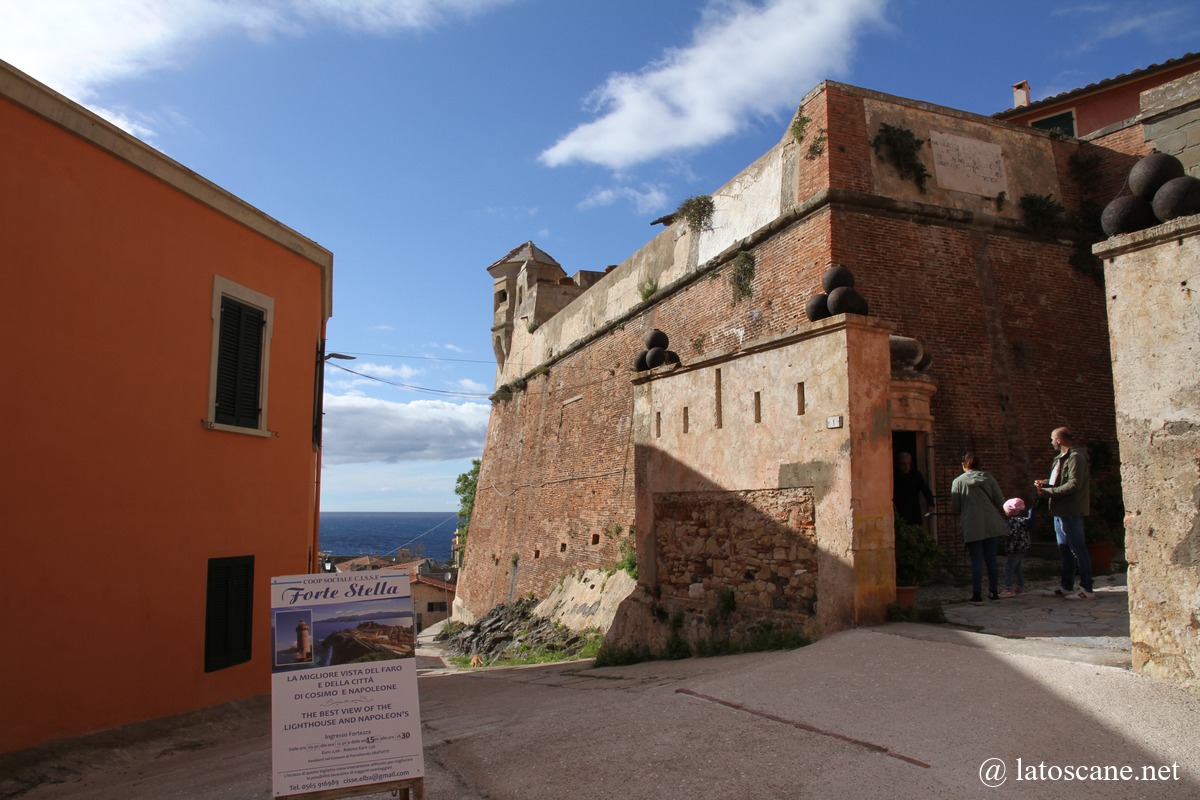
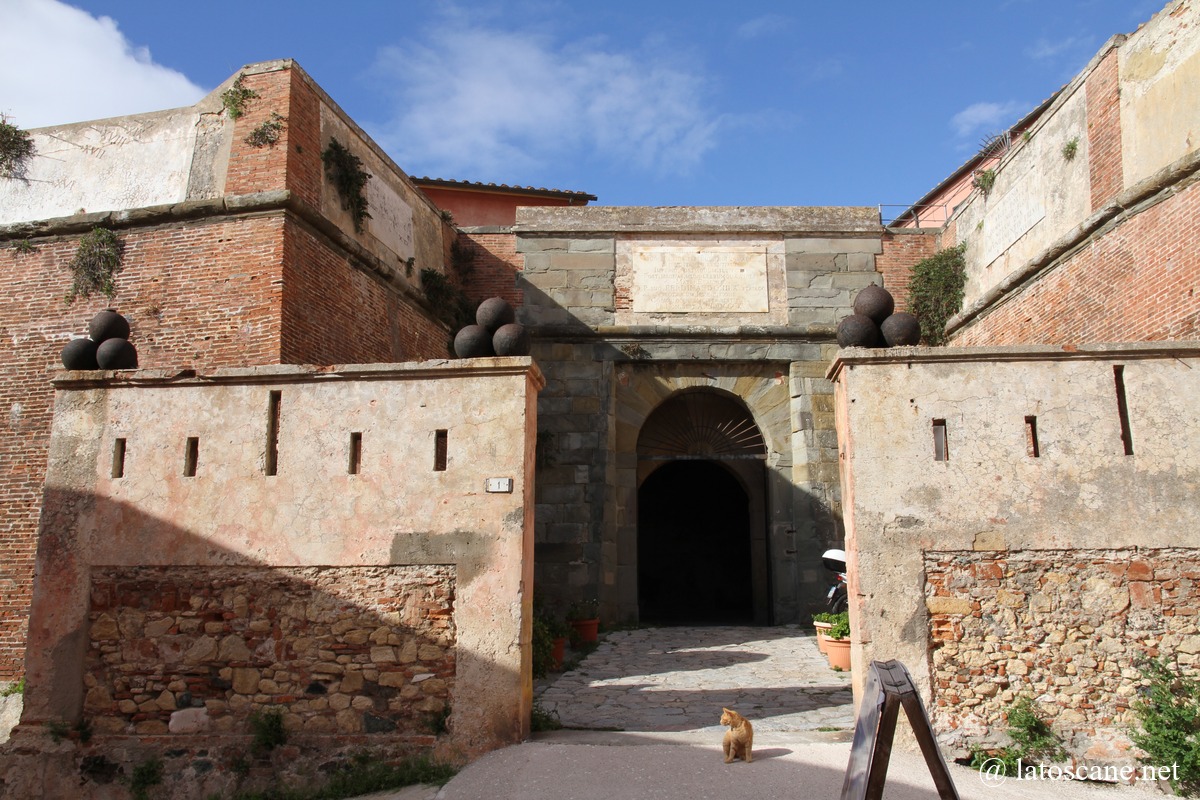
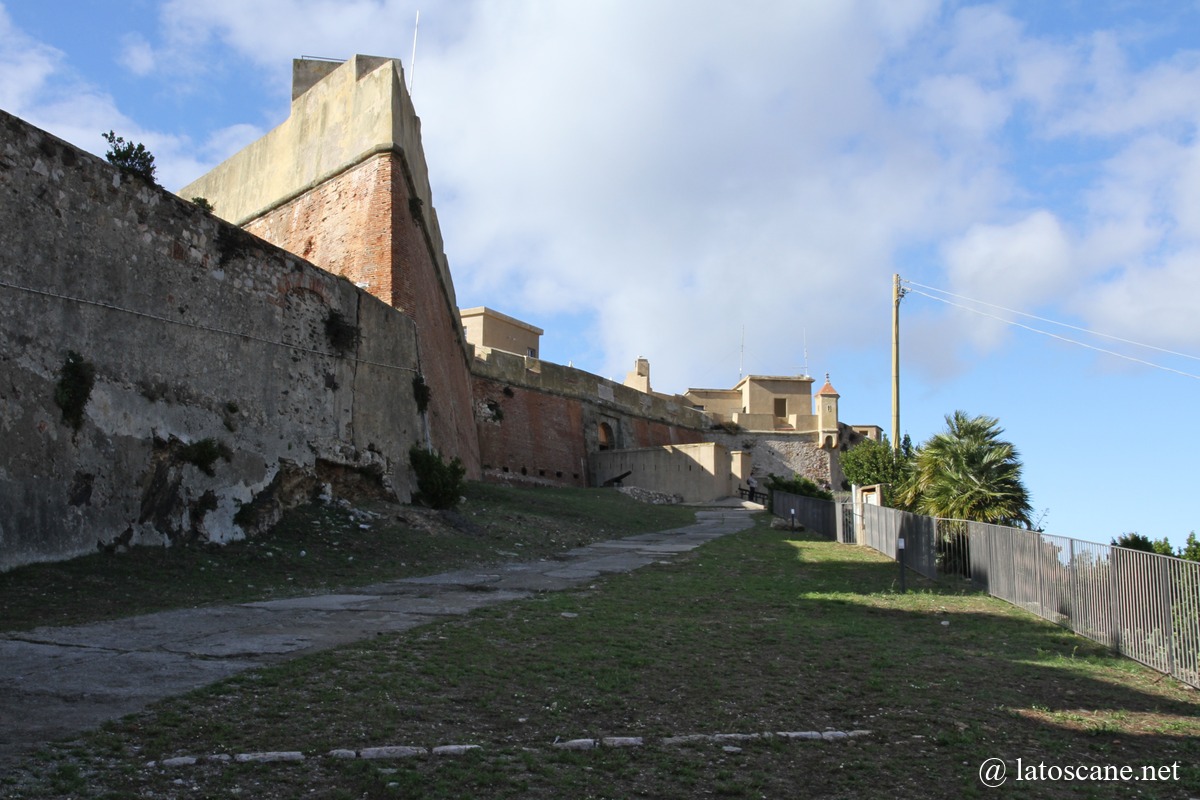
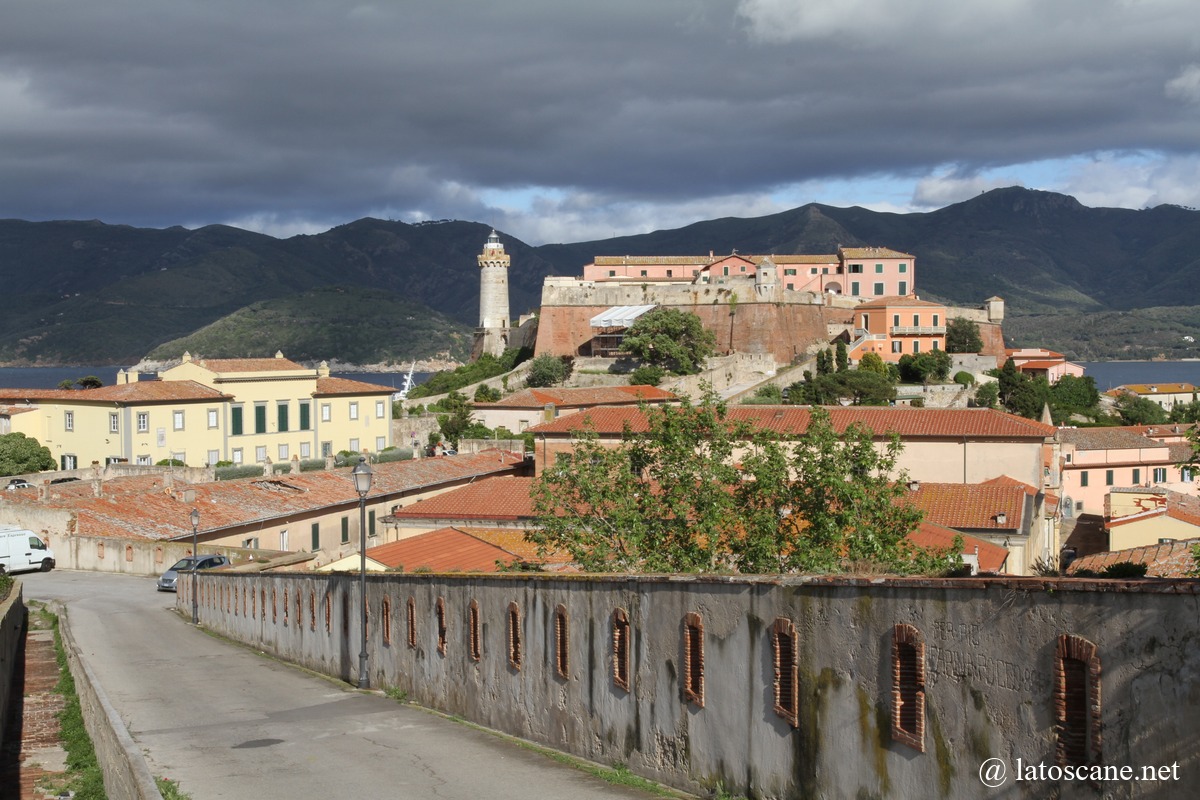
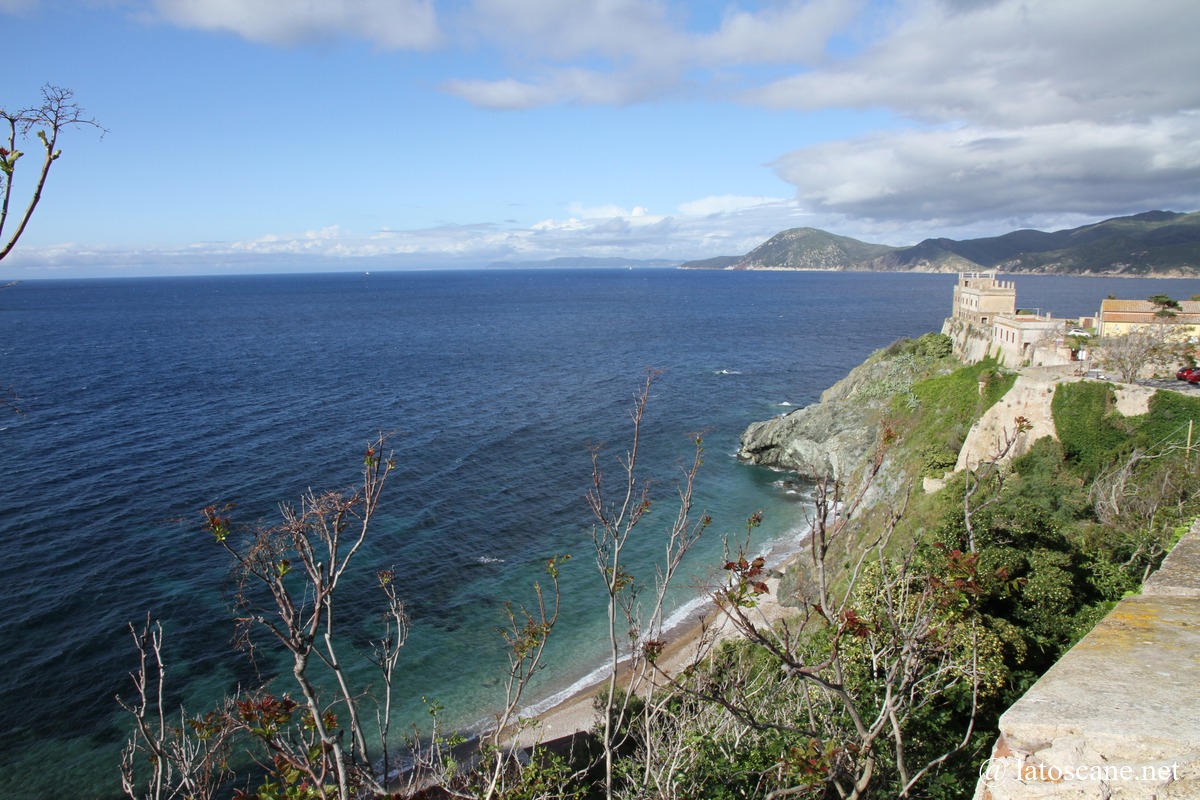
Archaeological Museum of Portoferraio
Housed in the Torre della Linguella, at the entrance of the harbor, the archaeological museum brings together the main discoveries made on the island of Elba and in the Tuscan Archipelago. Its collection spans a period from Prehistory to the Roman era. It includes Etruscan ceramics from tombs and maritime sites, Greek and Phoenician amphorae recovered from shipwrecks, as well as everyday objects discovered during local excavations. The rooms dedicated to the Roman period display mosaics, lamps, and utensils associated with the island’s seaside villas. The museum also documents the strategic importance of the archipelago in ancient trade. Its location within a Renaissance defensive tower provides a historical setting consistent with the collections on display.
Palazzina dei Mulini
Napoleon Bonaparte was exiled to the island of Elba in 1814. The Palazzina dei Mulini, located in the historic center, was his main residence. Today, it houses a museum showcasing the emperor’s personal belongings and information about his stay on the island. Villa San Martino, situated in the countryside, served as his secondary residence and offers insight into his lifestyle during exile.
The Palazzina dei Mulini was built in 1724 for the Grand Duke of Tuscany, Gian Gastone de’ Medici.
It is located in the upper part of Portoferraio’s historic center, between Fort Stella and Fort Falcone, on a promontory overlooking the sea and the harbor.
The name “Mulini” comes from the fact that there were formerly four windmills on this site, destroyed shortly before Napoleon’s arrival.
When Napoleon moved in during his exile (May 1814 – February 1815), he had the residence redesigned: architect Paolo Bargigli raised the central body, arranged a ballroom, remodeled the gardens, and transformed some ancillary buildings (former prison, theater, etc.) for court life purposes.
Today, it contains a collection of Empire-style furniture, paintings, personal objects, as well as the library Napoleon brought from Fontainebleau, later enriched with additional acquisitions.
The garden, façades, and outdoor spaces are regularly restored to reflect their appearance during the Napoleonic period.
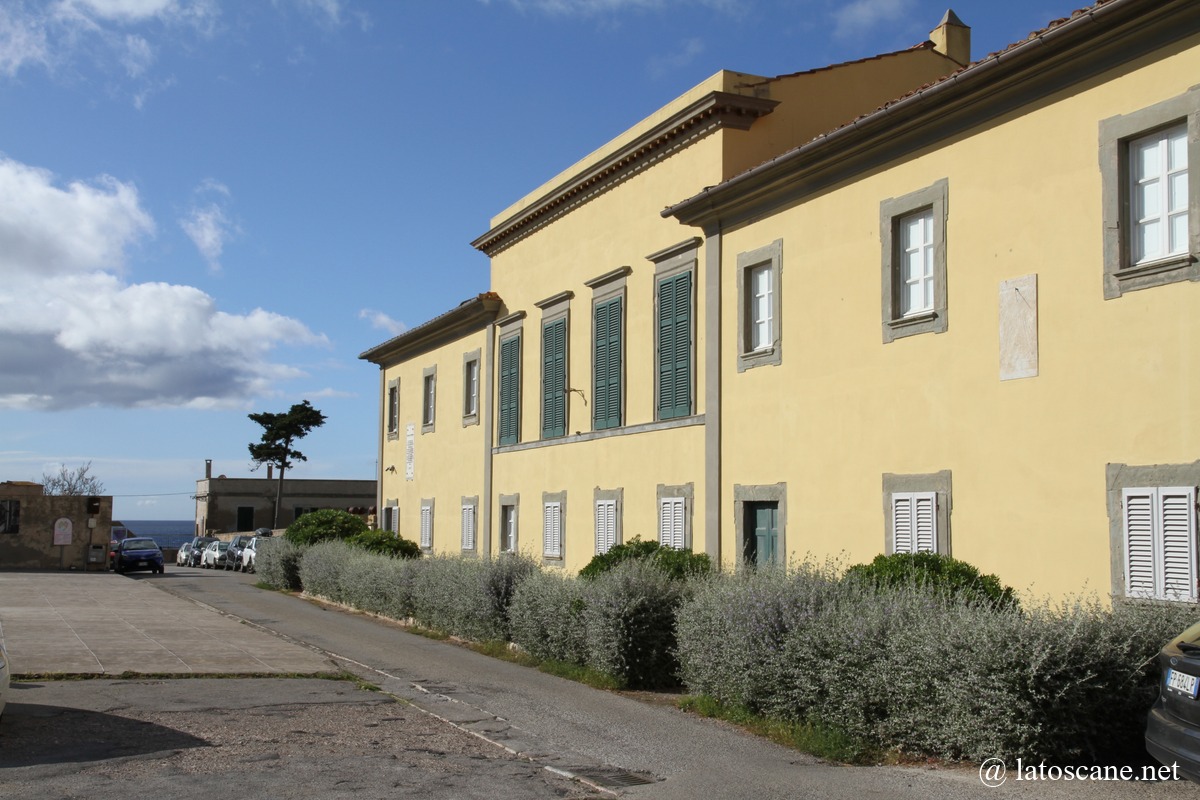
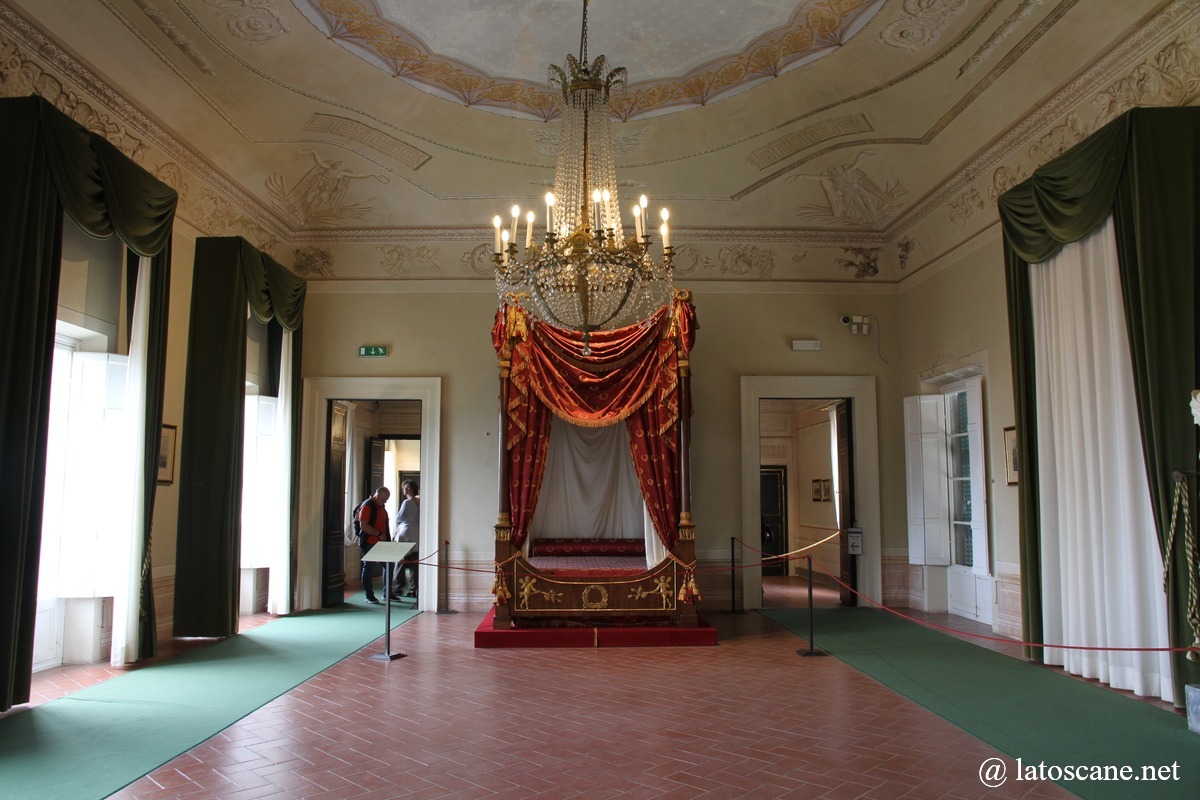
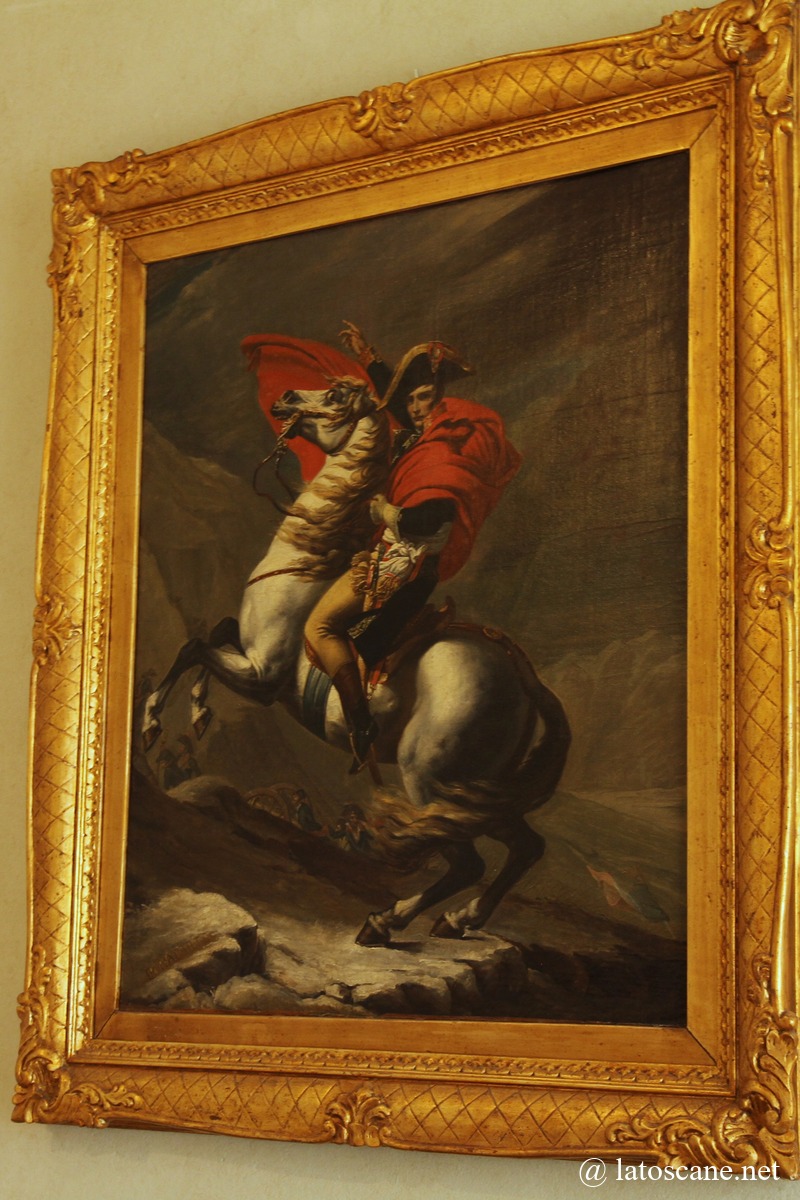
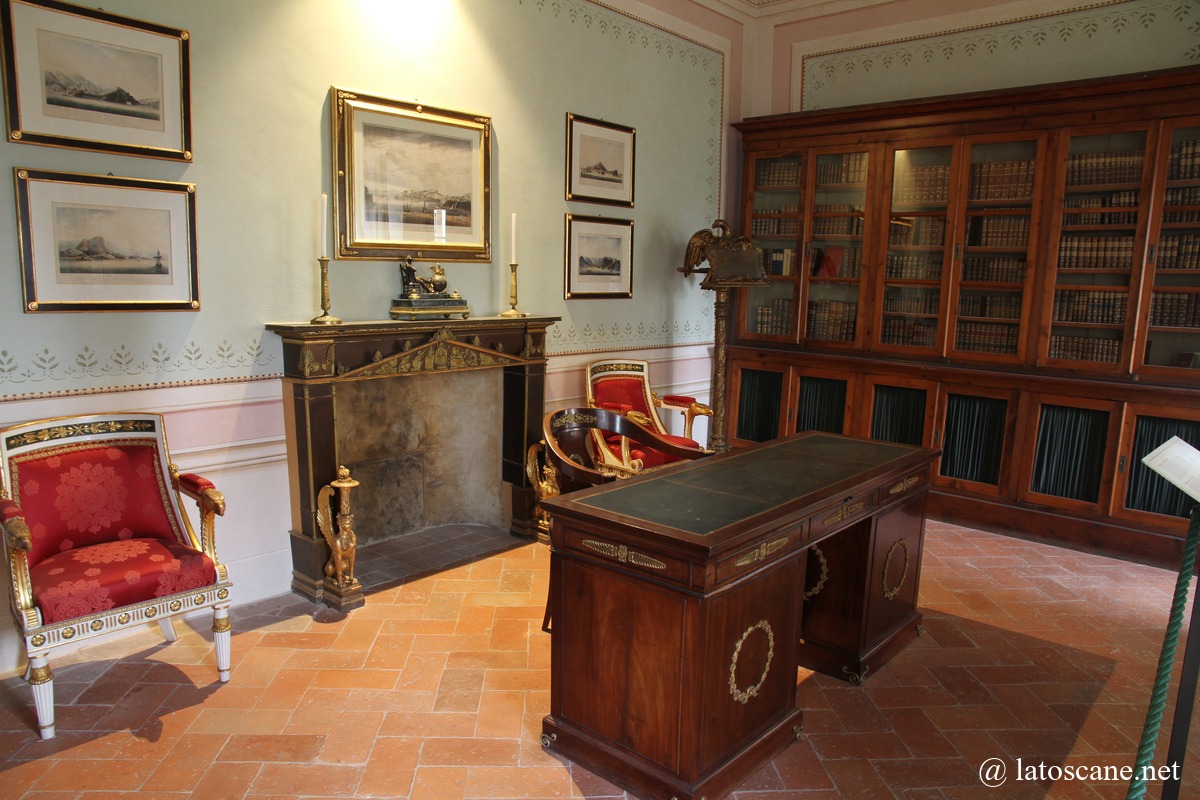
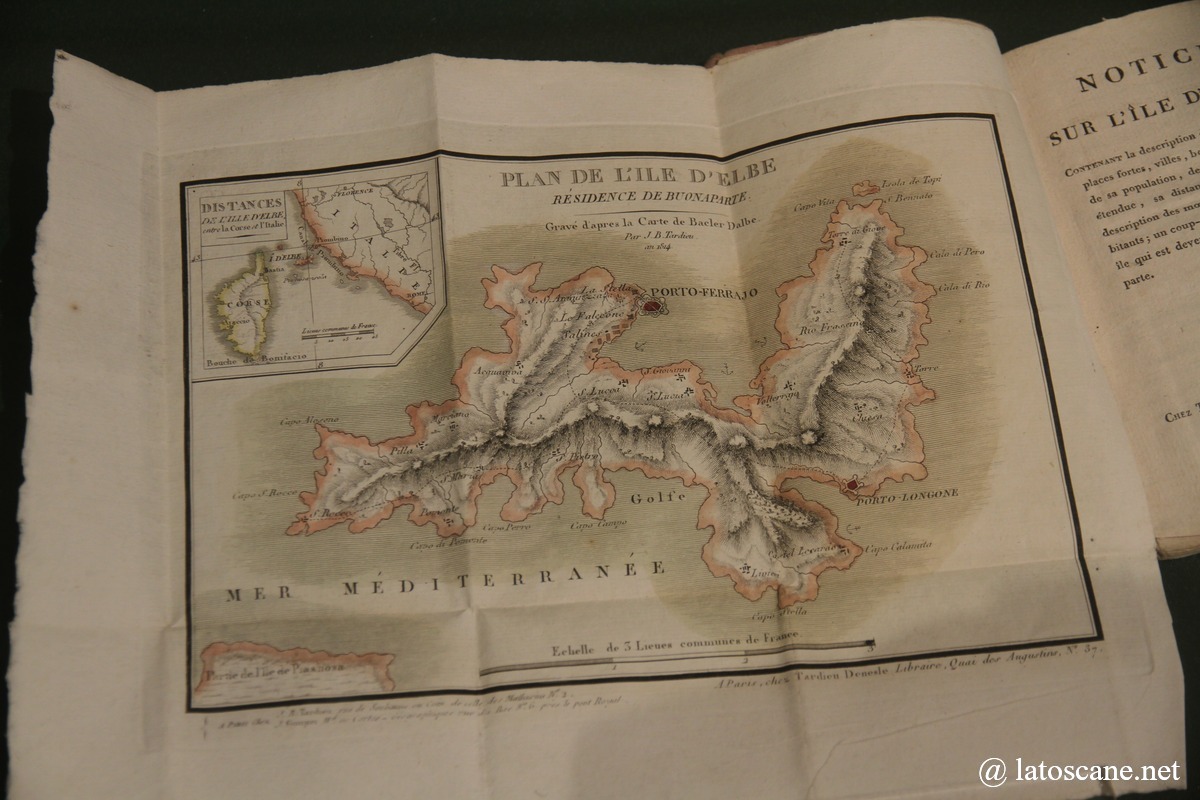
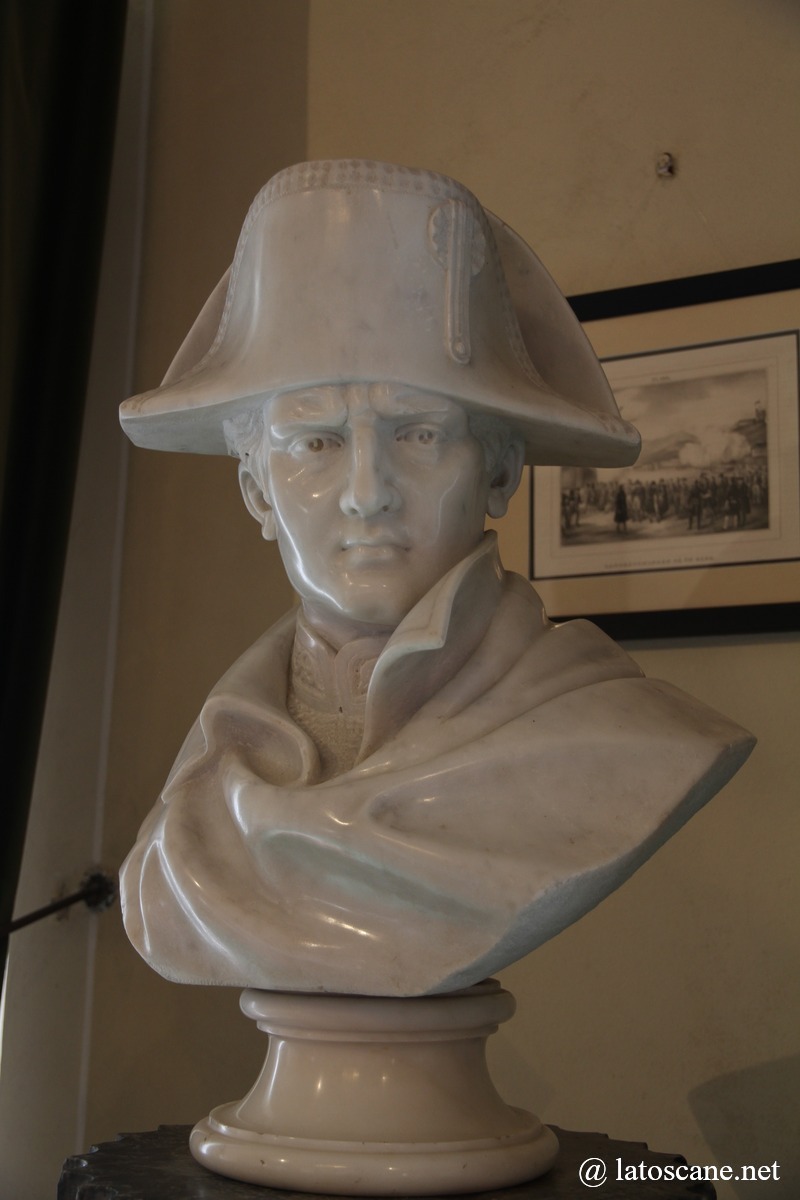
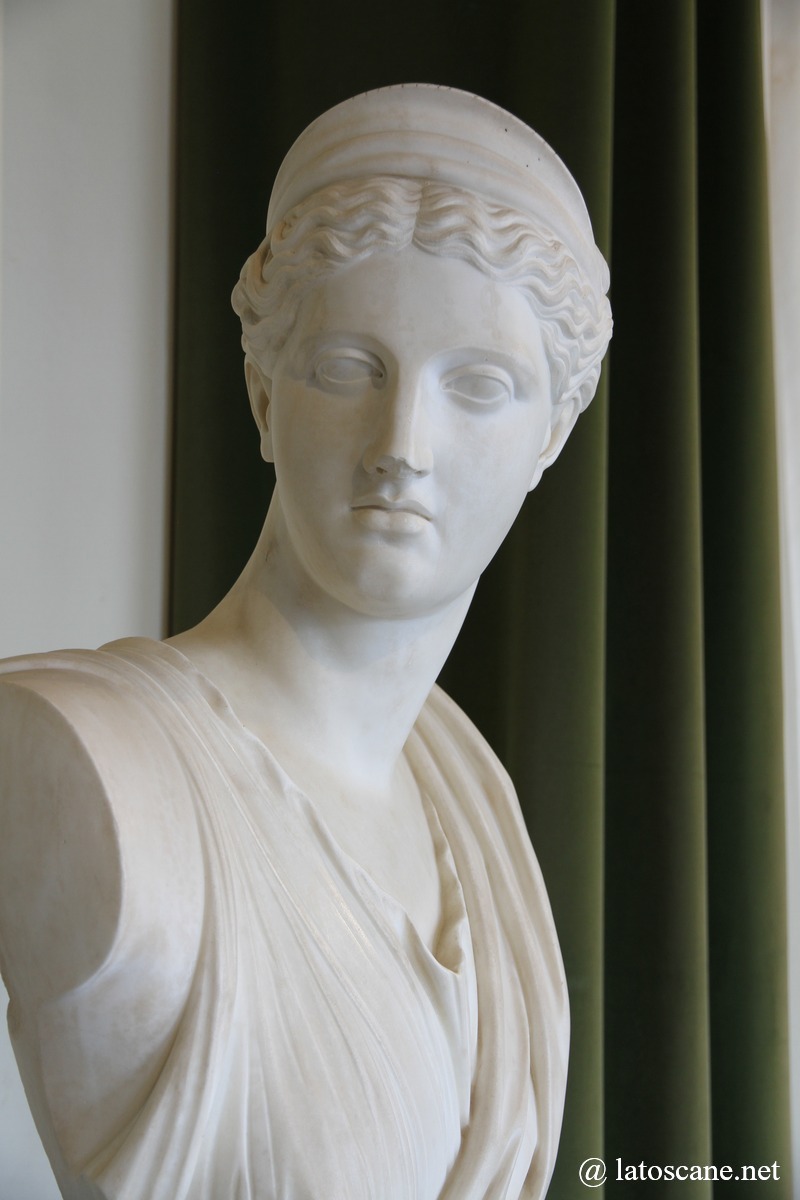
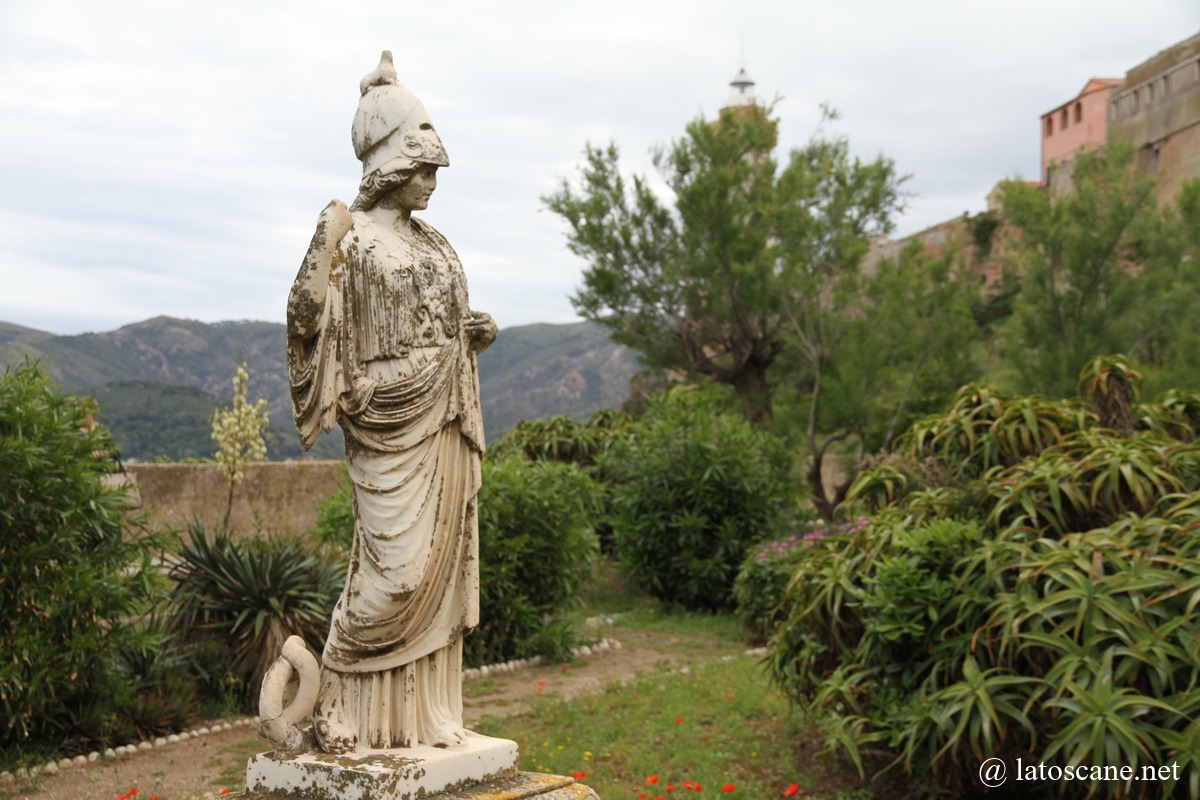
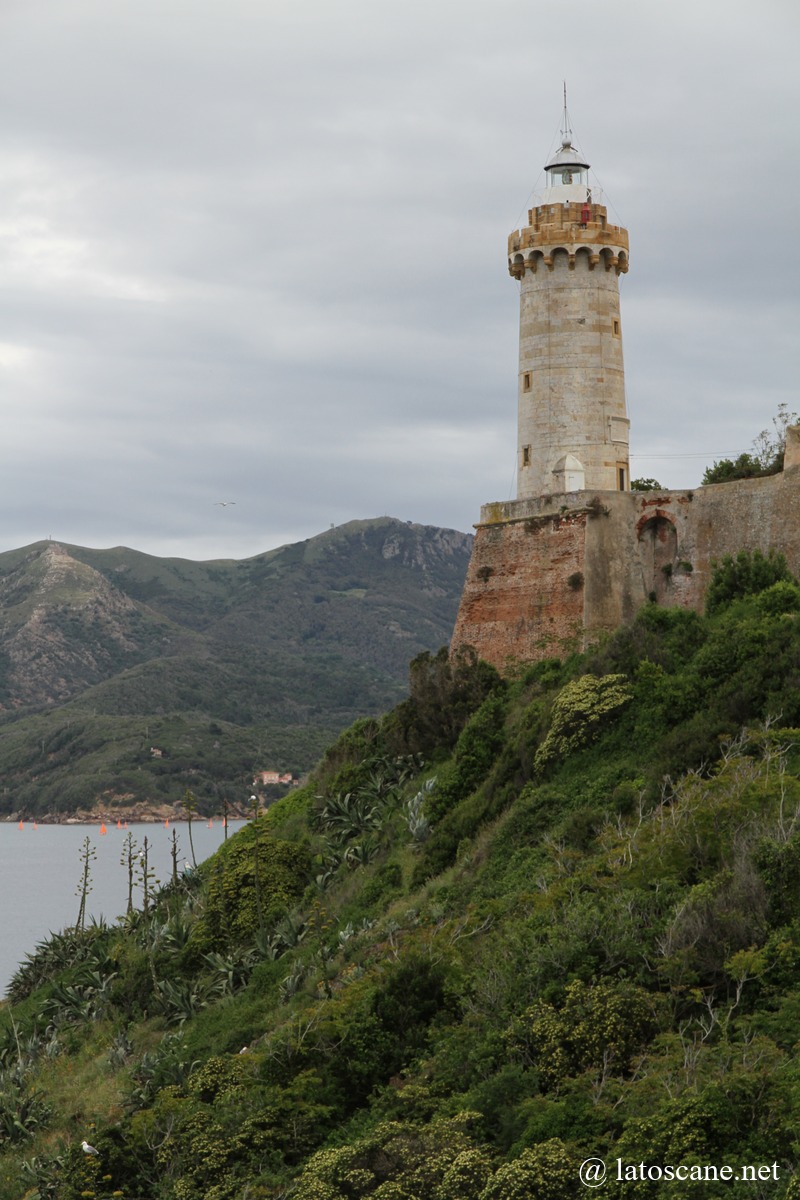
Beaches of Portoferraio
Ghiaie Beach
This beach is the most popular in Portoferraio, easily accessible from the city center. It consists of small white pebbles and offers very clear water. The seabed is shallow for several meters, suitable for families. The beach has some facilities.
Cala dei Frati Beach
Cala dei Frati is a small cove with white pebbles about 100 meters long, located between Ghiaie and Padulella beaches, accessible mainly by sea or swimming from Ghiaie. Transparent waters, no facilities, rarely crowded due to its more difficult access.
Padulella Beach
About a kilometer from the previous one, this charming small pebble beach is accessible on foot from the city center. Its waters are clear and shallow, and the beach is surrounded by rocks and vegetation, offering a pleasant environment.
Capo Bianco Beach
On the other side of a small headland relative to Padulella Beach, this beach is characterized by its light sand and shallow waters. It is bordered by small white limestone cliffs that give it a picturesque appearance. Capo Bianco is suitable for swimming and gentle water activities. Less crowded than Ghiaie, it remains accessible on foot from the center.
Sottobomba Beach
This rather secluded beach is west of the previous one, similar in style, mainly small pebbles, bordered by small cliffs. The water is clear and calm. Quieter due to less direct access on foot.
Le Viste Beach
Le Viste Beach in Portoferraio is a small beach with pebbles and coarse sand, located below the Medici walls. It is appreciated for its clear water and views, although its space is limited and often busy in summer.
Madonnina Point
Behind the harbor, a small cove with white pebbles and clear water, calm but quickly crowded in summer due to its proximity to the center.
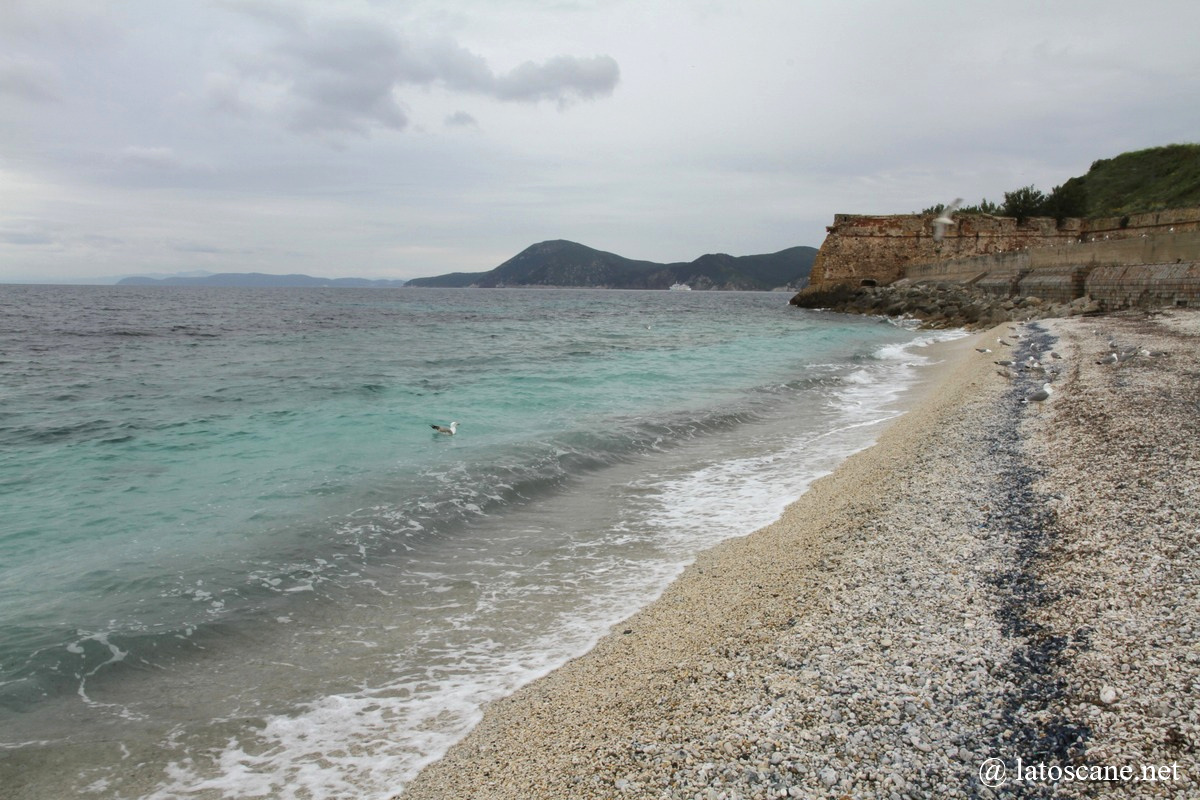
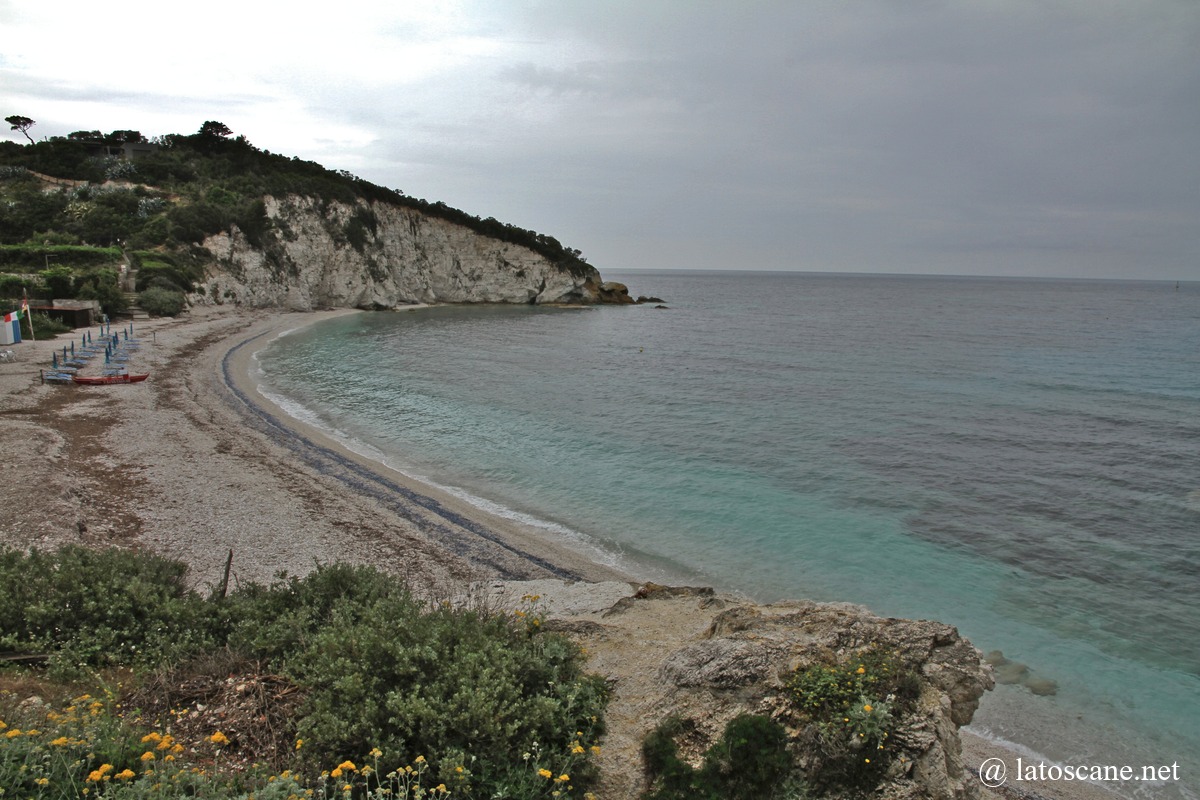
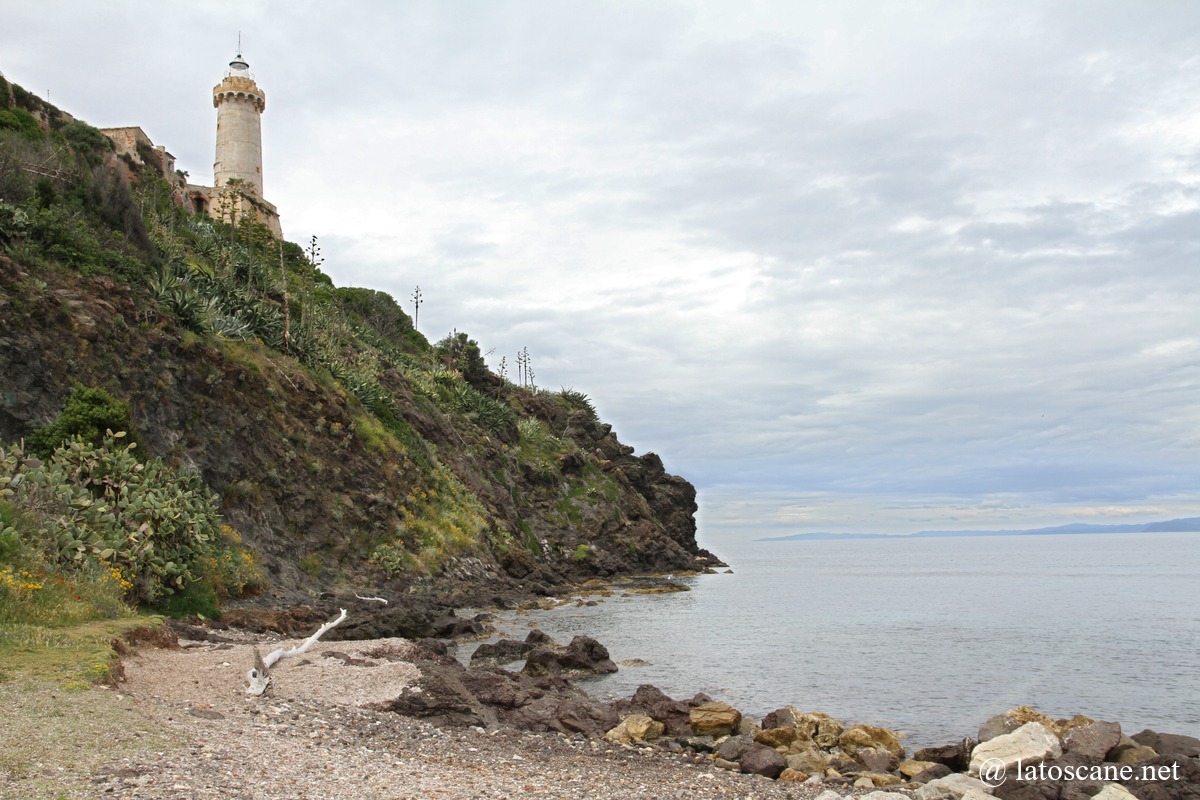
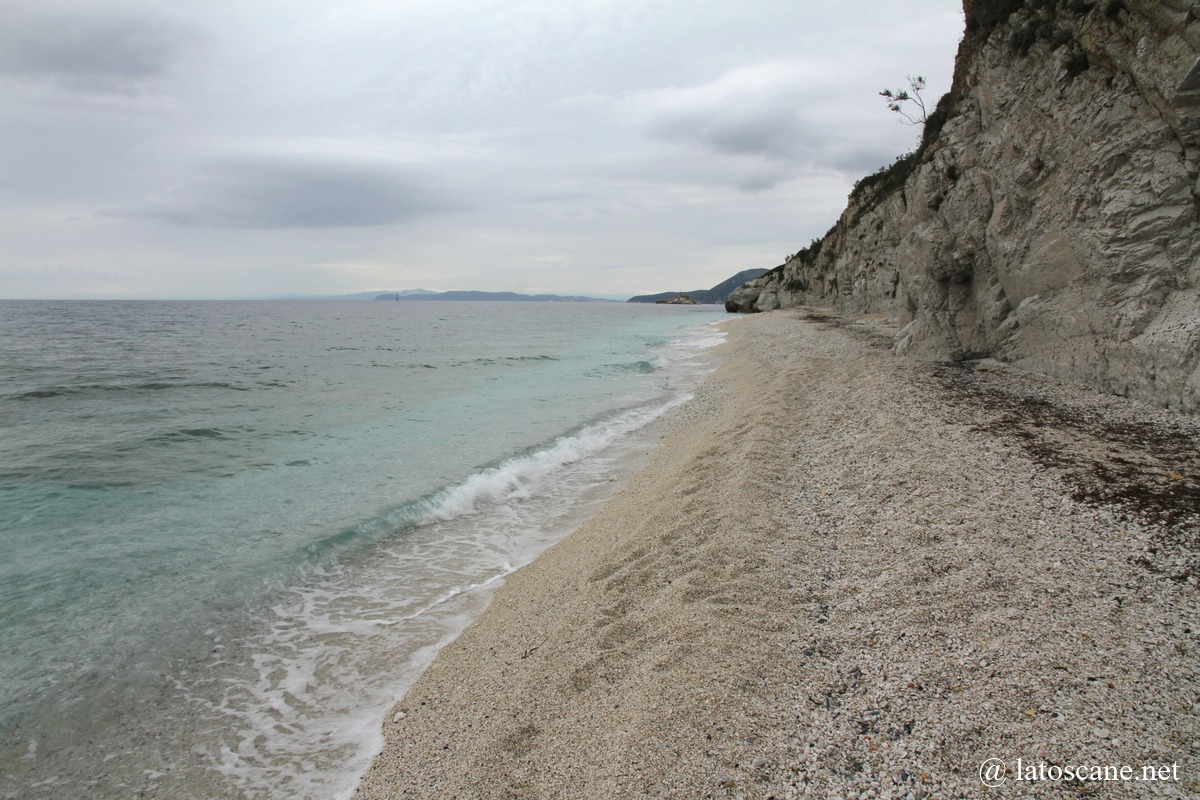
Ranking of the Most Beautiful Beaches near Portoferraio
- Sansone Beach: Probably the most spectacular: very light pebbles, intense turquoise water, white cliffs. Ideal spot for snorkeling, striking natural setting. Access is somewhat demanding but rewarded by the landscape.
- Capo Bianco Beach: Large beach with white pebbles, limestone cliffs in the background. Deep and clear blue water, highly photographed.
More accessible than Sansone, but equally impressive. - Ghiaie Beach: Iconic beach of Portoferraio, with polished white-grey pebbles and clear water.
Protected marine reserve with fish visible from the shore. Very busy, but a must-see. - Padulella Beach: Small cove bordered by cliffs, light pebbles and crystal-clear water. More intimate atmosphere than Capo Bianco or Ghiaie. Highly appreciated by those seeking calm and snorkeling.
- Sottobomba Beach: Enclosed beach at the foot of a white cliff, sand mixed with pebbles. Less known, quieter, picturesque setting. Access via a steep staircase, moderate crowds.
- Enfola Beach: Unique due to its isthmus configuration (double beach). Good starting point for hikes towards the Enfola promontory. Nice panoramic view, but beach less comfortable and less spectacular.
- Seccione Beach: Long beach with dark pebbles. Clean water, mainly visited by locals. Less impressive than its neighbors, mainly valued for its tranquility.
Things to Do on Elba Island
Links and Information
- Wikipedia – Portoferraio – Complete article on the history, geography, culture, and main points of interest in Portoferraio, perfect for an overview.
- Visit Elba.info – Portoferraio – Travel blog offering advice on historical sites, beaches, museums, and activities in Portoferraio.
- Visit Tuscany – Portoferraio – Official presentation in English of the town, with details on its port, fortifications, and tourist attractions.


No Comments Yet